Jeremiah Rogers is a Cambodia-based traveling photographer who quit his job as an engineer at Facebook to travel around the world and take pictures of everyday life. He shares stories about travel and becoming a better photographer on his blog.
This article originally appeared here, and is being republished with express permission from Jeremiah.
When I started taking pictures the conventional wisdom was to shoot with a 50mm equivalent lens (on a full frame camera or film). I stuck with that for years. It helps that good 50mm lenses are cheaper and have less distortion than other lenses on every camera system I’ve found1. This makes 50mm a natural place to start.
50mm lenses are good for learning because they force a photographer to compose pictures more tightly than 35mm lenses lenses. If you’re reasonably close to your subject there’s almost no space in a 50mm frame to cut content later.
So 50mm was the easy choice and I had Henri Cartier-Bresson as ideological support. If the most famous photographer in the world spent most of his life only shooting at 50mm then why would I need to try anything different?
Ergonomics
I switched from 50mm to 35mm lenses because the ergonomics are better on my camera, but I stayed because I like the pictures more. What ergonomics?
First, the 35mm is easier to shoot in low light: it has a wider depth of field at f/2 and it is more resistant to camera shake. What I can do at 1/60 and f/2.8 on a 50mm lens I can do at 1/30th second and f/2 on a 35mm lens. Thats two extra stops of light! It’s huge.
Second, the 35mm lens is smaller and easier to focus on a Leica. I believe this article in Luminous Landscape that 35mm is the more ergonomic choice for rangefinders. I don’t understand why 50mm lenses are small on SLRs and 35mm lenses are small on rangefinders. That’s how it is.
Third, the 35mm lens is easier when interacting with people. While 50mm lenses are good for standing five to ten feet away from someone, 35mm lenses only work if someone is right in your face or in the same car as you. If I sit down outside and a kid walks right up to my face a 35mm lens lets me capture their head and shoulders. A 50mm lens only lets me take a picture of their face.
Last, for me the 35mm is more fun. I only learned this after shooting for a while but the 35mm lets me shout. I like to shout.
Yes, the 50mm lens is perfect for someone like Henri Cartier-Bresson who was a painter first and a photographer second2. The distortion and framing on 35mm can be maddening. As a photographer first, the 35mm is more versatile and looks fine to me.
Comparing 50mm and 35mm lenses
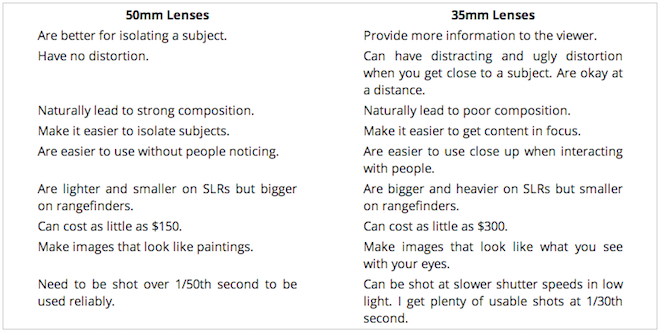
Recommended 35mm Lenses
If you have no camera, then the Fuji X100T ($1299) is easily the best 35mm-equivalent lens camera for beginners. Read my review of the X100S and consider just getting a used X100S for $600 instead of a new X100T. If you’re just getting started in photography and on a budget read my letter to a new photographer.
On the high end most photographers I know love the Sigma 35mm f1.4 art ($899) series lenses for Canon full frame and Nikon full frame. For Canon full frame cameras the Canon 40mm f2.8 pancake ($150-$199) is close enough to 35mm that it’s what I used most of the time on my Canon 6D.
I rarely go wider than f/2 and use a 1970’s era Leica 35mm f2 (link is to the new aspherical version). I got mine used in Shanghai for $1,300. In the United States you can get them used at B&H or buy the very similar Zeiss 35mm f2 ($1087) brand new for 1/3 of the price of the Leica. The Zeiss is just a little bit bigger, but who cares?
For Nikon crop sensor cameras like the Nikon D7100 and D3300 I would get the 24mm f/2.8D ($349) lens. It’s manual focus only on cameras below the D7000 but I like manual focus more anyway.
1. I’m talking about a 50mm equivalent lens on a 35mm film camera. On a medium format camera the equivalent is 80mm and on an APS-C camera the equivalent length is roughly 35mm. This gets confusing.
2. “The 35 is splendid when needed, but extremely difficult to use if you want precision in composition. There are too many elements, and something is always in the wrong place. It is a beautiful lens at times when needed by what you see. But very often it is used by people who want to shout.” – Henry Cartier-Bresson
Additional Resource:
- The Best Cameras Lenses For Different Styles Of Photography

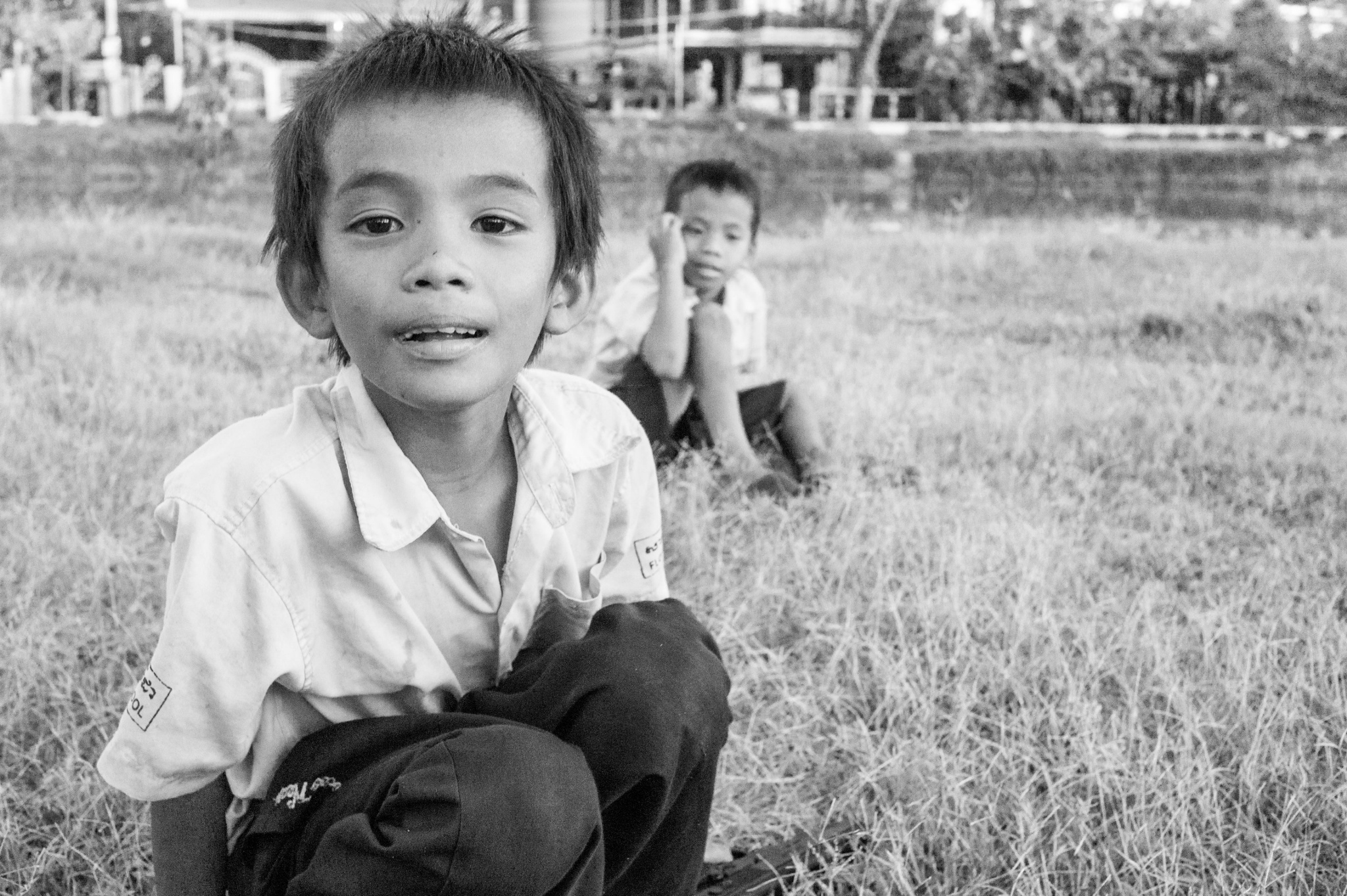









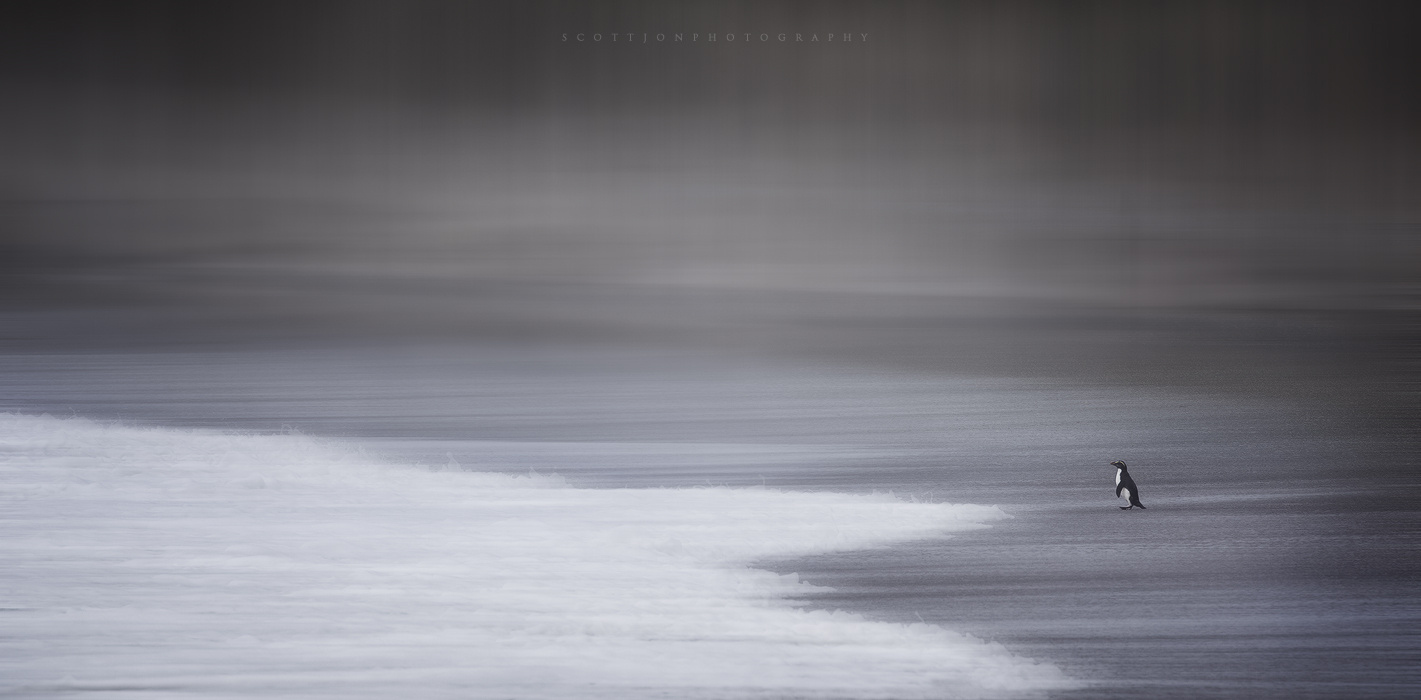
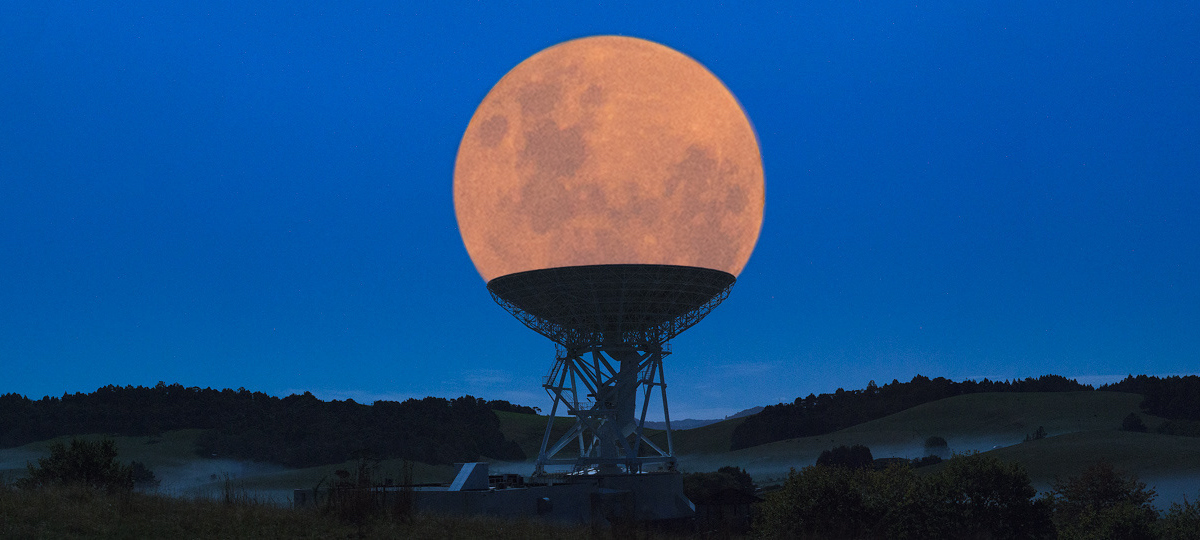
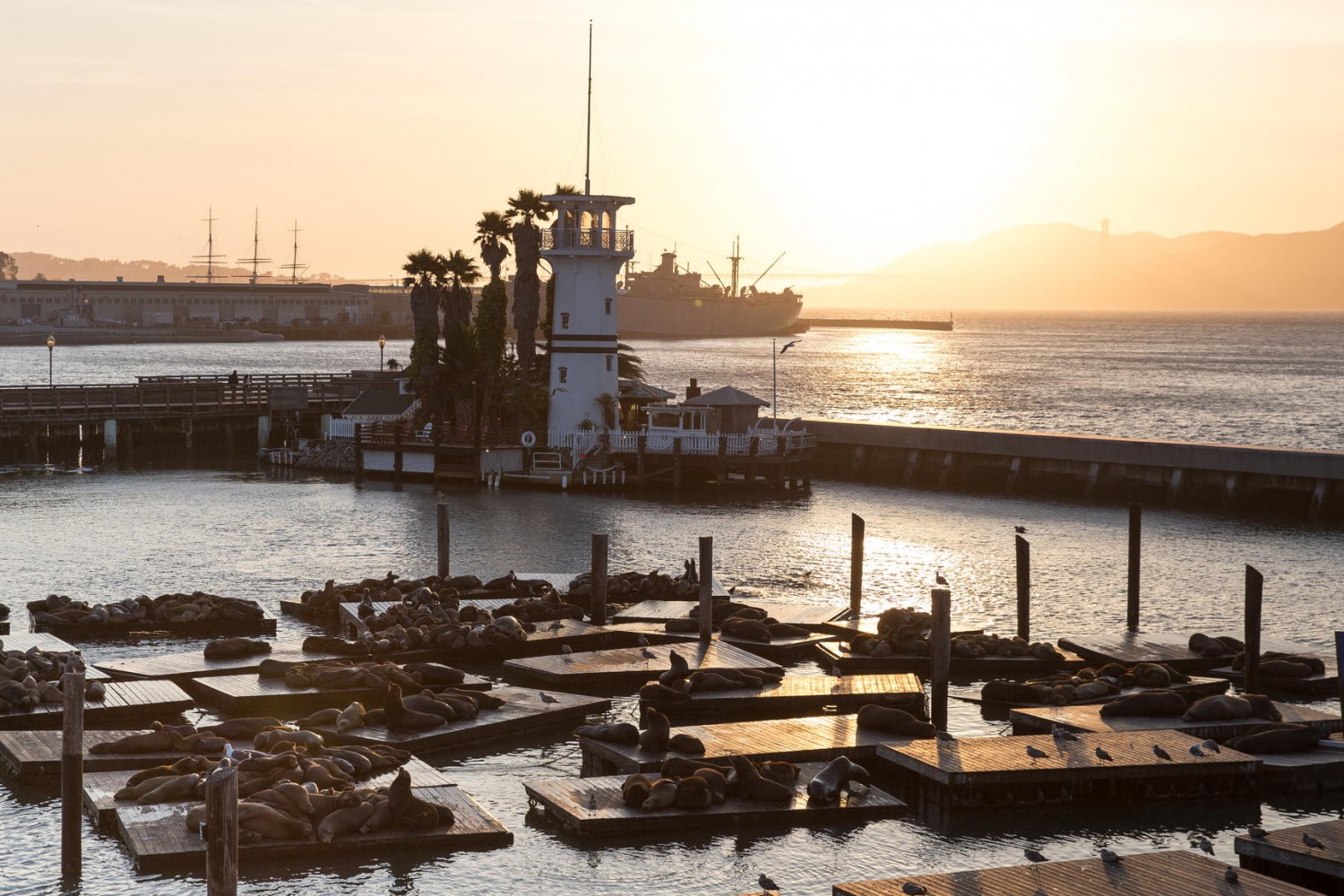


Leave a reply